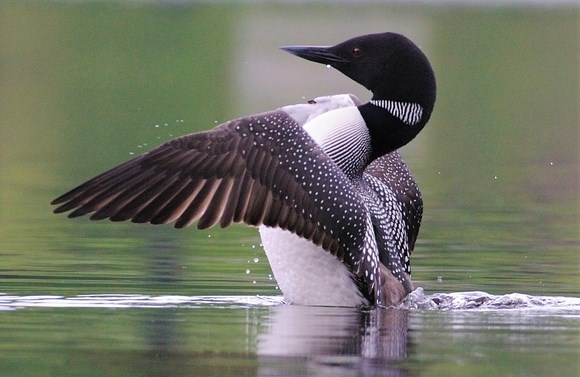
Scott Rando The Upper Delaware Region is home to several species of loons, grebes, coots, and cormorants. These birds may be mistaken for waterfowl but carry distinctive traits that set them apart. Loons are large aquatic birds with an excellent ability for diving. They can dive to a depth of 200 feet and swim underwater for up to five minutes. Most birds have hollow and light bones, but loons have solid bones, making them less buoyant. In addition, they can expel air from their lungs and feathers before a dive. Since loons are expert divers, most of their diet consists primarily of fish in addition to some crustaceans, snails, leeches, and aquatic insect larvae. Like loons, grebes are also diving birds. Grebes are much smaller than loons, with compact bodies and small thick bills. Their feet are located at the rear of their body. They act like propellers and help them move quickly through the water. Grebes tend to be opportunistic feeders but mainly consume crustaceans and small fish. They also eat their feathers and will feed them to chicks. This behavior seems to aid with digestion; the feathers form a plug in the stomach, which prevents harmful indigestible items from passing into the intestine. Coots are distinguished by their round bodies, which superficially resemble chickens. Although they are often mistaken for ducks while floating on the water, they are distinctly different birds. They have long toes with lobes of skin between them, which help them to swim. Their diet consists primarily of plants, but they also eat insects, snails, and crustaceans. Coots nest in dense masses of aquatic plants. They can lay up to 10 speckled eggs, and the young are ready to leave the nest soon after hatching. Cormorants are dark-colored waterbirds with lengthy and strongly hooked bills. They have bare patches of skin on their face, which can be brightly colored, like the orange-yellow skin on the Double-crested Cormorant's face and throat. Their diet consists almost exclusively of fish, except for some insects, crustaceans, and amphibians. Cormorant wings have less oil than many other waterbirds, which helps them to be faster and more agile underwater. However, after chasing prey underwater, they often must stand in the sun with their wings spread apart to let them dry. Common loons, grebes, coots, and cormorants in the Upper Delaware Region include: Ameircan Coot (Fulica americana) Double-crested Cormorant (Phalacrocorax auritus) |
Last updated: March 10, 2021
